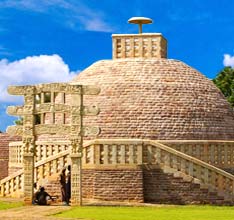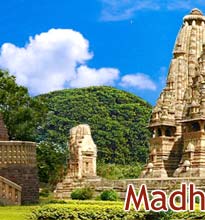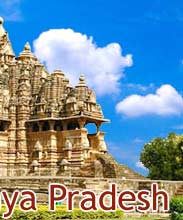A place where nature has expressed herself in some of
the most enchanting ways, Pachmarhi is a veritable delight of beauty and
tranquility. Nestled in the plateaus of the Satpura ranges, at a height
of 3,500 ft, it claims distinction as the only hill station in Madhya
Pradesh. A health sanatorium and summer hideaway of the British, during
the colonial era, the place retains its charm in its hypnotic landscape
and clement climatic conditions. With its meandering waterfalls, placid
streams, jutting mountains and deep ravines; it remains unmatched as a
vacationing destination. Get info on the weather & climate of this
hill resort of Pachmarhi.
Summer
Summers in Pachmarhi lasts from the month of May to July. In this
season, the place turns into an exclusive holidaying destination for
people from the adjoining plains. Owing to its high elevation and
evergreen vegetation, the climate remains highly bracing and favorable
throughout the summer season. Days remain relatively warmer than nights,
with the maximum daytime temperature not exceeding 35oC.
Winter
Unlike the hill stations of the Himalayas that practically shut down
due to biting winter months, Pachmarhi continues to be an ideal
vacationing destination even during winters. Winters lasts from November
till February and days remain cold and crisp, with the minimum
temperature dropping down to 4oC during the night. The
sylvan-hued trees and the mist-drenched air heighten the beauty of
Pachmarhi during this season. Heavy woolens are recommended if you are
Pachmarhi-bound during the winters.
Monsoon
From July to September, it is monsoon time in Pachmarhi. The place
experiences moderate rain and the average rainfall is recorded at 785.84
mm. The landscape gets soaked with seasonal waterfalls and lush
vegetation. Mists hang in the air and weather generally remains cloudy.
After the monsoon season, the place blooms with a renewed freshness.
Thus, even though Pachmarhi is an all-weather holidaying destination,
the place is at its best from the months of September to May.










